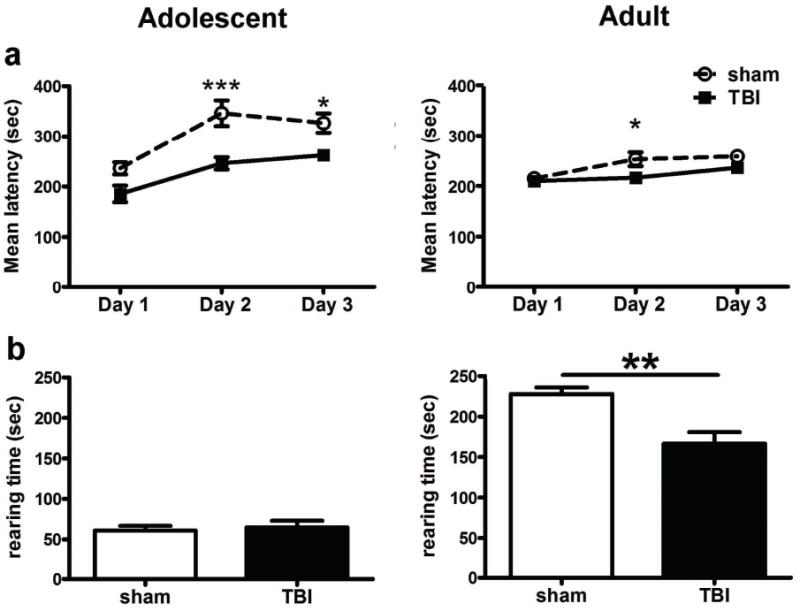Figure 6.

Motor learning and rearing deficits were evident after frontal TBI. Mice were tested on the rotarod across three consecutive days (a). At adolescence, TBI mice showed a significant reduction in the mean latency to fall at days 2 and 3 (2-way RM ANOVA, post-hoc *p<0.05, ***p<0.001) compared to sham-operated mice. Although less pronounced, this injury-dependent impairment was also evident at adulthood (post-hoc, *p<0.05). Rearing behavior measured in the open field task was also used to detect forelimb motor function (b). While adolescent sham and TBI mice did not differ, adult TBI mice showed a significant deficit in rearing behavior compared to their respective shams, with a reduction in the time spent rearing (t1,17=3.560, p=0.0024; n=10/group).
